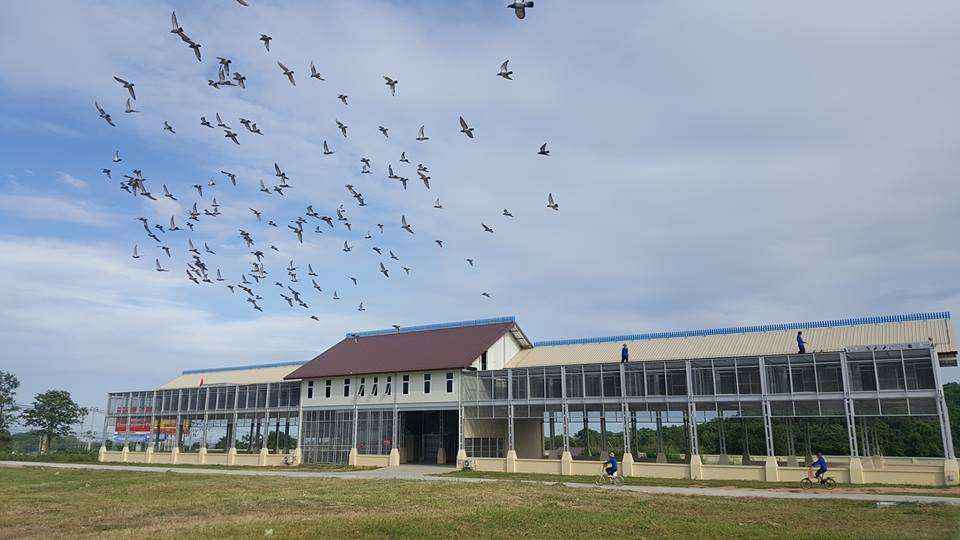One Loft Races vs. Club Races: Which is Better for Your Pigeons?

Pigeon racing has evolved significantly over the years, offering breeders and enthusiasts multiple competitive formats. Two of the most popular types are one loft races and club races. While both formats test a pigeon’s endurance, speed, and homing ability, they differ in training methods, race conditions, and the level of control breeders have over their birds. Choosing between these two race types depends on your goals, experience, and the strengths of your pigeons. In this post, we’ll explore the key differences, advantages, and challenges of each to help you decide which is the best fit for your pigeons.
Understanding One Loft Races
One loft races (OLRs) have gained popularity worldwide because they provide a fair and competitive environment. In an OLR, all participating pigeons are raised and trained in the same loft, eliminating any advantages based on loft location or training methods. The race organizers take responsibility for feeding, training, and conditioning the birds before the competition.
Benefits of One Loft Races
One major advantage of OLRs is equal opportunity. Since all pigeons train under identical conditions, the results reflect the natural ability and genetics of the bird rather than the breeder’s training techniques. This makes OLRs an excellent way to assess breeding quality and identify top-performing bloodlines. Moreover, breeders do not have to worry about training their birds, which can be time-consuming and expensive.
Another significant benefit is international exposure. Many one loft races attract participants from around the world, offering breeders a chance to showcase their pigeons on a global stage. Winning or even placing well in a major OLR can significantly increase a pigeon’s value in auctions, making this format highly attractive for breeders looking to establish a reputation.
Challenges of One Loft Races
Despite these benefits, OLRs come with their own set of challenges. The most obvious drawback is loss of control. Since the race organizers handle training and care, breeders have no influence over feeding, exercise routines, or environmental conditions. If the loft manager’s training methods are ineffective, it could negatively impact the pigeons’ performance.
Additionally, entry costs for OLRs can be high. Unlike club races, where breeders train their birds at home, OLRs require entry fees, which cover the costs of training, housing, and race operations. This investment may not always guarantee returns, especially if your pigeon does not perform well or gets lost during training.
Top 3 One Loft Race Organizers
For breeders looking to participate in high-profile OLRs, here are three of the most prestigious one loft race organizers:
- Million Dollar Pigeon Race (South Africa) – One of the most well-known and highest-paying one loft races in the world, attracting top pigeon breeders globally.
- Victoria Falls World Challenge Pigeon Race (Zimbabwe) – A highly competitive race known for its challenging course and breathtaking location, testing the endurance of racing pigeons.
- Golden Algarve One Loft Race (Portugal) – One of Europe's premier one loft races, featuring a well-organized competition with significant prize money and international participation.
Exploring Club Races
Club races follow a traditional format where breeders train, care for, and race their pigeons from their own lofts. These races take place within local clubs and are often structured into leagues or seasonal competitions.
Benefits of Club Races
One of the biggest advantages of club races is full control. Breeders can decide their pigeons’ diet, exercise routines, and training strategies, allowing them to customize their approach for the best results. If a pigeon is underperforming, breeders can make immediate adjustments, something that is not possible in OLRs.
Club races also offer lower costs compared to OLRs. Since breeders handle training themselves, there are no hefty entry fees. This makes club racing a more affordable option, especially for newcomers or small-scale pigeon fanciers who want to participate without significant financial commitments.
Challenges of Club Races
Although club races provide more control, they also demand a greater time investment. Training pigeons requires dedication, experience, and access to a proper training route. Without consistent training and conditioning, pigeons may not perform well in club races.
Another challenge is geographical advantage. Since club races take place from breeders’ home lofts, location plays a significant role. Breeders closer to the release point may have an advantage over those farther away. This means that performance in club races does not always indicate a pigeon’s true ability, as external factors can impact results.
Which Race Format is Right for You?
Choosing between one loft races and club races depends on your goals, resources, and preferences. If you want to test the genetic strength of your pigeons and gain international recognition, one loft races may be the ideal choice. However, if you prefer having control over training and racing strategies, and want a more cost-effective option, club races might be better suited for you.
Many experienced breeders participate in both formats to diversify their racing strategy. They use club races for hands-on experience while entering select pigeons in OLRs to test their bloodlines against international competition. By leveraging the advantages of both, breeders can maximize their success in the pigeon racing world.